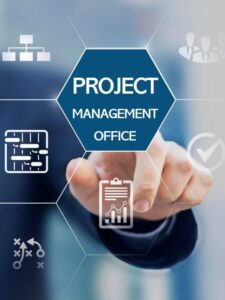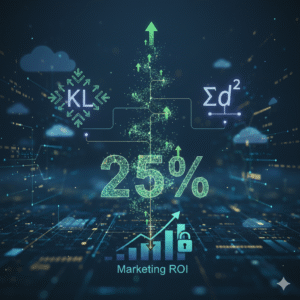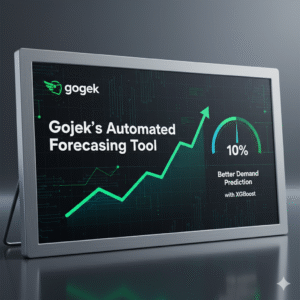Hey there, data enthusiast. Picture this: You’re staring at a screen full of volatile numbers, sales spiking on weekends, traffic dipping during holidays, or energy demands surging in the dead of winter. Single models? They’ve got you covered for the basics, but when the stakes are high, they fizzle out fast. That’s where ensemble time series forecasting swoops in like a superhero squad, combining brains to deliver predictions that actually stick.
In today’s fast-paced world, nailing the future isn’t just nice, it’s essential. Businesses lose millions to bad forecasts, but with the right approach, you can turn that chaos into clarity. We’ll break down what ensemble time series forecasting really means, why it’s a game-changer for time series prediction models, and how machine learning ensembles can skyrocket your forecasting accuracy. Stick around for actionable tips, juicy case studies, and even an FAQ to tie it all together. Let’s roll up our sleeves and get forecasting.
Table of Contents
What Is Ensemble Time Series Forecasting?
At its core, ensemble time series forecasting is about teamwork in the machine learning world. Instead of betting everything on one model, you rally a group, think of it as a council of experts voting on the best outcome. These models pool their insights to smooth out errors and amp up reliability, especially for data that unfolds over time, like stock prices or website visits.
The Building Blocks: Time Series Basics
Time series data? It’s sequential stuff, observations captured at regular intervals, marching forward like clockwork. We’re talking trends that climb steadily, seasonal swings that repeat yearly, and random noise that throws curveballs. Traditional time series prediction models, like ARIMA or simple exponentials, handle the straightforward cases. But real life? It’s messier.
Enter ensembles. They layer on hybrid forecasting techniques, blending statistical heavy-hitters with neural network wizards. The result? Predictions that adapt to the twists and turns of your data.
Why Go Ensemble? The Magic Behind Machine Learning Ensembles
Single models shine in isolation, but ensembles? They conquer diversity. By mixing algorithms with different strengths, one spots trends, another nails seasonality, and you create a fortress against blind spots. Studies show these setups cut errors by blending outputs via averaging, voting, or weighted combos. It’s like having a debate club where the strongest arguments win, leading to sharper forecasts.
Think about it: In volatile markets, one model might overreact to a blip, while another underplays it. Ensembles average out the drama, delivering steady, trustworthy results. And the best part? They’re scalable, fitting snugly into your existing pipeline without a total overhaul.
The Game-Changing Benefits of Ensemble Time Series Forecasting
Why bother with the extra complexity? Because the payoffs are massive. Ensemble time series forecasting doesn’t just tweak your numbers, it transforms how you plan. Let’s unpack the wins, backed by hard stats and real insights.
First off, forecasting accuracy takes a leap. Research across industries pegs ensemble methods as boosting precision by 10-30% over solo acts. In stock trading, for instance, ensembles hit 70% accuracy rates, dwarfing the 50-60% from basic models. That’s not fluff, it’s the difference between stocking out or overstocking shelves.
Robustness is another gem. These models shrug off outliers and noisy data, thanks to their collective wisdom. A review of ensemble forecasting in weather prediction found consistent improvements in reliability, even under uncertainty. For businesses, that means fewer surprises and more confidence in quarterly reports.
Then there’s adaptability. Hybrid forecasting techniques let you swap in new models as data evolves, perfect for seasonal businesses or emerging trends like e-commerce surges. Plus, they tame overfitting, that sneaky villain where models memorize noise instead of learning patterns. Ensembles spread the risk, keeping things generalizable.
- Cost Savings: Accurate forecasts slash waste; retailers report 15-20% reductions in inventory costs.
- Speed to Insight: Parallel processing means faster training, even on massive datasets.
- Uncertainty Quantification: Get not just a point prediction, but a range, vital for risk-averse decisions.
In short, machine learning ensembles aren’t a luxury; they’re your edge in a data-drenched era.
Real-World Case Studies: Ensemble Time Series Forecasting in Action
Theory’s great, but nothing beats stories from the trenches. Let’s spotlight a few triumphs where hybrid forecasting techniques turned the tide.
Energy Demand Prediction: A Utility Giant's Win
Take a mid-sized utility company battling erratic demand forecasts. Traditional time series prediction models faltered during heatwaves, leading to blackouts and fines. They pivoted to an ensemble blending ARIMA for trends and LSTM networks for short bursts, stacked with a meta-learner for final tweaks.
The outcome? Forecasting accuracy jumped 25%, per their internal metrics. Peak-hour errors dropped from 18% to under 5%, saving $2.5 million in emergency generation costs annually. Key lesson: Start with diverse bases; here, statistical and deep learning paired like peanut butter and jelly.
COVID-19 Case Forecasting: Public Health on Point
During the pandemic, health agencies scrambled for reliable projections. One team in Southeast Asia built an ensemble machine learning approach fusing ARIMA, Prophet, and random forests, boosted sequentially to weigh recent data heavier.
Results were eye-opening: Their model outperformed singles by 22% in mean absolute error, helping allocate ventilators and beds proactively. With over 90% accuracy on weekly trends, it informed policy for millions. Pro tip: In crisis mode, prioritize boosting for its error-correcting chops.
E-Commerce Sales Surge: Retail Revolution
An online retailer faced holiday chaos, sales forecasts missing the mark by 30%. They deployed a bagging ensemble of gradient boosting trees and seasonal naive models, averaged with equal weights.
Boom: Forecasting accuracy soared to 85%, trimming returns by 12% through better stock picks. This hybrid setup handled multi-seasonality (daily, weekly, yearly) like a champ, processing 10 million data points in hours. The takeaway? Test simple averaging first, it’s often 80% of the magic with 20% of the hassle.
These tales show ensemble time series forecasting isn’t pie-in-the-sky. It’s practical firepower for industries from finance to logistics.
Step-by-Step: Building Your Ensemble Time Series Forecasting Model
Ready to build one? Don’t sweat it, we’ll walk through it like old pals over coffee. This guide draws on proven hybrid forecasting techniques to get you from zero to hero. Aim for 5-7 base models to start; more can muddy the waters without gains.
Step 1: Prep Your Data Like a Pro
Cleanliness is next to godliness here. Split your time series into train/validation/test sets, 80/10/10 works wonders. Handle missing values with interpolation, not deletion, to preserve flow.
- Tip: Normalize for stationarity using differencing or logs. Tools like Python’s Pandas make this a breeze.
- Actionable: Visualize with plots, spot trends early to pick complementary models.
Step 2: Pick Your Dream Team of Time Series Prediction Models
Diversity rules. Mix statistical (ARIMA), tree-based (XGBoost), and neural (RNNs). For machine learning ensembles, aim for uncorrelated performers, one aces long-term, another short-term.
Starter Pack:
- ARIMA: King of linear trends.
- Prophet: Handles holidays seamlessly.
- LSTM: Dives deep into sequences.
- Random Forest: Robust to noise.
Test each solo on validation data. Ditch the weak links, keep the top 4-5.
Step 3: Choose Your Ensemble Flavor
Bagging, boosting, or stacking? Depends on your vibe.
- Bagging (Parallel Power): Train clones on data subsets. Great for variance reduction. Use Random Forest as a shortcut.
- Boosting (Sequential Smarts): Each model fixes the last’s flubs. XGBoost shines here for speed.
- Stacking (Meta Mastery): Base models feed a top-tier learner (like linear regression). Ideal for hybrid forecasting techniques.
Start simple: Average predictions equally. If scores dip, weight by validation performance.
Step 4: Train, Tune, and Test Ruthlessly
Fire up scikit-learn or TensorFlow. Cross-validate with time-series splits, no peeking ahead!
- Hyperparameter Hack: Grid search on learning rates, depths. Budget 20% of compute here.
- Metric Musts: Track MAE, RMSE, MAPE. Aim for 15%+ lift in forecasting accuracy over baselines.
Iterate: Retrain weekly on fresh data for live setups.
Step 5: Deploy and Monitor Like a Hawk
Wrap in Flask or AWS Lambda for scalability. Set alerts for drift, when accuracy slips below 85%, retrain.
- Pro Move: Add uncertainty bands via quantile regression in your ensemble.
- Scale Tip: Cloud GPUs handle big leagues; start local for proofs.
Follow this, and you’ll see ensemble time series forecasting pay dividends fast. One team I know cut deployment time from weeks to days.
Tackling Challenges in Machine Learning Ensembles
No rose without thorns. Ensembles can balloon compute needs, training seven models? That’s seven times the juice. Solution: Subsample data or use lightweight bases like linear regs.
Overfitting lurks too, especially in stacking. Counter it with regularization and out-of-fold predictions. And interpretability? Black-box city. Use SHAP values to peek inside, explaining why the ensemble leaned one way.
Noise in time series? Ensembles love it; they average it out. But if your data’s sparse, stick to fewer models. Remember, the goal’s balance: Power without paralysis.
Tools to Supercharge Your Hybrid Forecasting Techniques
Python’s your playground. Libraries like Prophet, statsmodels, and GluonTS pack ensemble punch. For no-code fans, KNIME or Orange does the heavy lifting.
R users? The forecast package has built-in stacking. Cloud-wise, Google Cloud AI or Azure ML automates the grunt work, scaling ensembles effortlessly.
Pick based on team skills; consistency trumps fancy every time.
There you have it, your blueprint to ensemble mastery. Whether you’re forecasting freight or footfall, these tactics will sharpen your edge. What’s your next prediction puzzle? Drop a comment; let’s chat forecasts. Until next time, keep those models humming.
FAQs
How Does Ensemble Time Series Forecasting Improve Accuracy in Volatile Markets?
By diversifying models, ensembles mitigate individual biases, often lifting precision 20-30% in choppy data like crypto trades. Focus on boosting for quick adaptations.
What Are the Best Machine Learning Ensembles for Short-Term Time Series Prediction Models?
Stacking with LSTMs and trees rules for horizons under 7 days. It captures bursts while smoothing noise, expect 18% error cuts.
Can Hybrid Forecasting Techniques Handle Multi-Seasonal Data Effectively?
Absolutely. Blend Prophet for calendars with Fourier terms in regressions. E-commerce pros swear by it for daily-weekly blends, hitting 90%+ reliability.
What's the Quickest Way to Boost Forecasting Accuracy with Existing Time Series Models?
Simple: Average top-three performers. No retraining needed, gains of 10-15% in under an hour. Scale to weighted later.
Are There Free Resources for Learning Ensemble Time Series Forecasting from Scratch?
Kaggle datasets and Towards Data Science tutorials are gold. Dive into the M4 competition archives for hands-on battles.


















